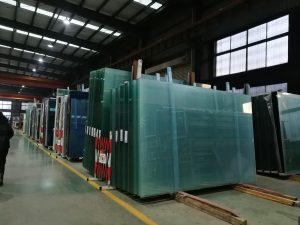Curtain wall facade is of great importance in the commercial buildings nowadays
By definition, curtain wall system is an independent frame assembly with self-sufficient components that does not brace the building structure. In commercial and residential buildings, building envelope components especially curtain wall generally provides two key functions: weather barrier against the environmental factors for air and water infiltration and light transmittance to the interior space. In practical applications, key requirements of curtain wall are to provide/maintain air/water integrity in the cladding system, adequate wind, thermal and seismic response in addition to provide light transmittance to the interior space.

Nowadays, modern curtain wall design can mostly show a building’s identity. Whether it is wrapped in ceramic, stone or steel, a carefully articulated facade transforms how we experience space and form. Moreover, glass facades embrace light and view, allowing warmth into buildings while opening a project to its surrounding context. Commonly built to span multiple floors, curtain walls typically include extruded aluminum framing and other materials to addresses lateral loads and sway. In the modern commercial buildings, curtain wall often is a combination of several system types and combined to express the architectural intent and aesthetically define the building profile. The system schemes may be an all-glazed facade (aluminum curtain wall systems, point-supported systems, cable net systems), an opaque facade (such as precast, natural stone and/or metal panels) or a combination of schemes dependent on the building intent.
In practical applications, layering space, curtain walls balance conditions along the envelope to control thermal expansion, movement, cooling, lighting and water diversion. When specifying such elements, it’s important to consider the support of curtain walls and how they transfer loads to floor structure or framing, as well as factoring in acoustic properties, maintenance, thermal and moisture performance. These years, glass curtain wall systems are typically widely used in a variety of applications around the world. In most cases, occupant comfort is a significant requirement of the curtain wall response. The amount of transmitted lighting through the vision areas may be controlled in different methods by glazing choice, tint choice, glass fritting, insulating glazing composition and shading. The expected parameters are provided by glazing manufacturers from testing and included in the mechanical system study for the building. The architectural design community is always challenged to improve visibility by varying sitelines, module spacing and material choice and these aspects have direct bearing on the level of transmitted light into the occupied space.
Tel: +86 18202256900 Email: steel@tjdpbd.com









